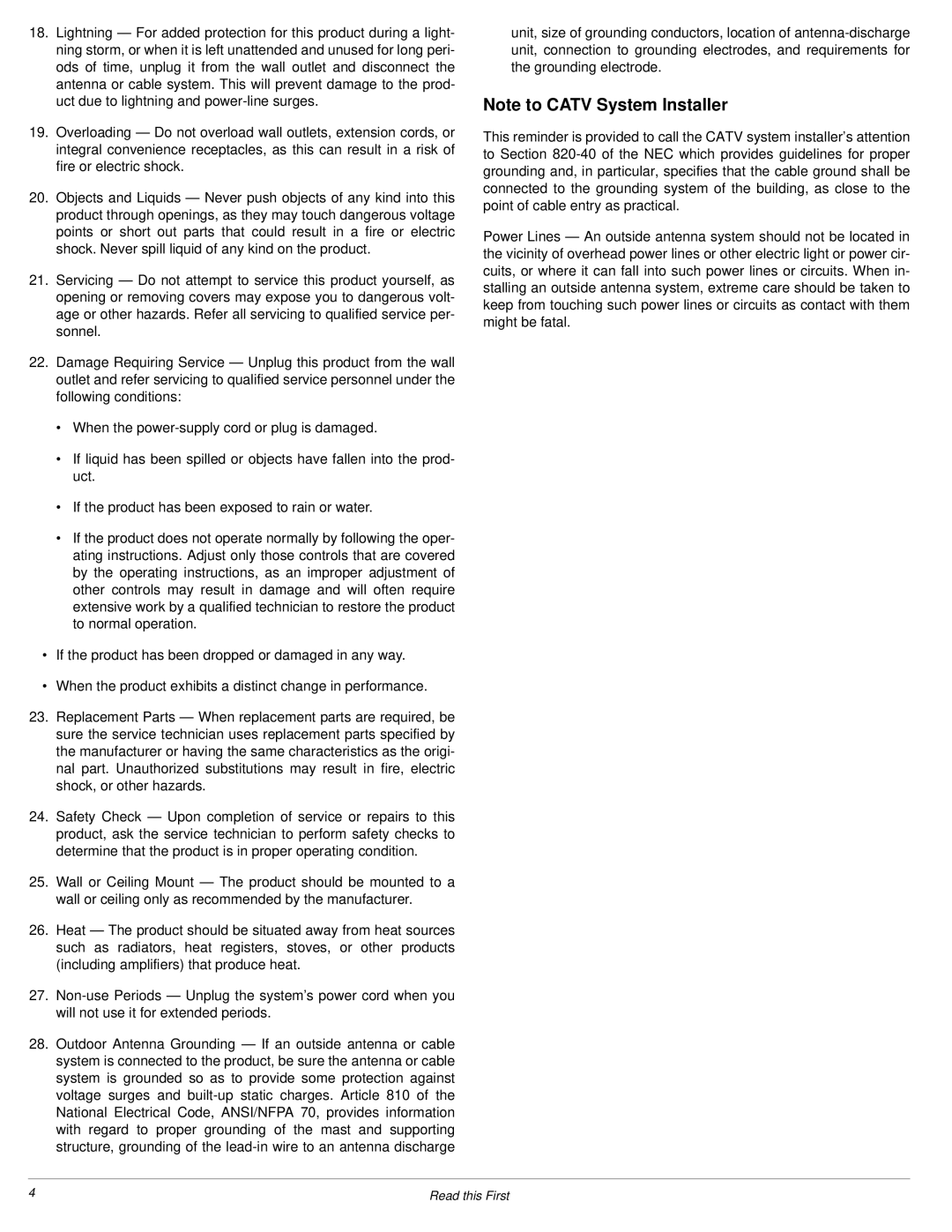18.Lightning — For added protection for this product during a light- ning storm, or when it is left unattended and unused for long peri- ods of time, unplug it from the wall outlet and disconnect the antenna or cable system. This will prevent damage to the prod- uct due to lightning and
19.Overloading — Do not overload wall outlets, extension cords, or integral convenience receptacles, as this can result in a risk of fire or electric shock.
20.Objects and Liquids — Never push objects of any kind into this product through openings, as they may touch dangerous voltage points or short out parts that could result in a fire or electric shock. Never spill liquid of any kind on the product.
21.Servicing — Do not attempt to service this product yourself, as opening or removing covers may expose you to dangerous volt- age or other hazards. Refer all servicing to qualified service per- sonnel.
22.Damage Requiring Service — Unplug this product from the wall outlet and refer servicing to qualified service personnel under the following conditions:
•When the
•If liquid has been spilled or objects have fallen into the prod- uct.
•If the product has been exposed to rain or water.
•If the product does not operate normally by following the oper- ating instructions. Adjust only those controls that are covered by the operating instructions, as an improper adjustment of other controls may result in damage and will often require extensive work by a qualified technician to restore the product to normal operation.
•If the product has been dropped or damaged in any way.
•When the product exhibits a distinct change in performance.
23.Replacement Parts — When replacement parts are required, be sure the service technician uses replacement parts specified by the manufacturer or having the same characteristics as the origi- nal part. Unauthorized substitutions may result in fire, electric shock, or other hazards.
24.Safety Check — Upon completion of service or repairs to this product, ask the service technician to perform safety checks to determine that the product is in proper operating condition.
25.Wall or Ceiling Mount — The product should be mounted to a wall or ceiling only as recommended by the manufacturer.
26.Heat — The product should be situated away from heat sources such as radiators, heat registers, stoves, or other products (including amplifiers) that produce heat.
27.
28.Outdoor Antenna Grounding — If an outside antenna or cable system is connected to the product, be sure the antenna or cable system is grounded so as to provide some protection against voltage surges and
unit, size of grounding conductors, location of
Note to CATV System Installer
This reminder is provided to call the CATV system installer’s attention to Section
Power Lines — An outside antenna system should not be located in the vicinity of overhead power lines or other electric light or power cir- cuits, or where it can fall into such power lines or circuits. When in- stalling an outside antenna system, extreme care should be taken to keep from touching such power lines or circuits as contact with them might be fatal.
4 | Read this First |
